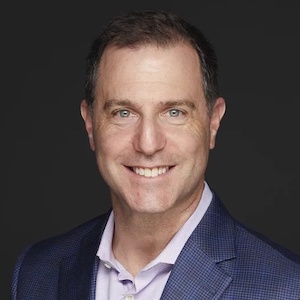Public Media Platform aims to expand reach with new tools

Screenshot from "What is the Public Media Platform?"

Screenshot from “What is the Public Media Platform?“
New tools for clients of NPR Digital Services may help to boost adoption of the Public Media Platform, a digital content distribution system that is angling for long-term sustainability.
The tools give the 160 stations that use NPR’s Core Publisher content management system access to the PMP for the first time. Stations using Drupal instead of Core Publisher can also use the platform with a plugin developed by NPR.
The PMP is operated by a nonprofit organization founded by NPR, PBS, Public Radio Exchange, Public Radio International and American Public Media. The founding networks are contributing digital content from their shows to the PMP, enabling stations to add the content to their websites for shows for which they have broadcast rights.
An NPR member station using Core Publisher or Drupal, for example, will be able to more easily add digital content from APM’s Marketplace to its website. The PMP also provides content relating to shows including PRI’s The World, PRX’s The Moth and Reveal, and NPR’s All Things Considered and Morning Edition. PBS text and video content from its COVE platform complements shows including American Experience, Antiques Roadshow and Independent Lens.
Previously, most stations aside from a group of nine pilot participants were unable to access the PMP unless they built their own technology. “This is a big step [for the PMP] because all of a sudden, 160 stations have access to content,” said Bob Kempf, v.p. of NPR Digital Services.
NPR also plans to introduce another tool this summer that will let stations add their own content directly to the PMP. And the Institute for Nonprofit News is developing a PMP plugin for stations that use WordPress, available later this year.
“More [content] probably needs to be in it for it to be more widely used,” Kempf said. “We’re not anywhere near the end stage. This is the end of the beginning. But we’ve got a long way to go.”
Uses for a new pipeline
The PMP is at a critical juncture, according to PMP Executive Director Kristin Calhoun. It’s now available to a large number of stations, and station adoption will drive its success, she said.
“Our number-one metric is adoption,” Calhoun said. “We don’t succeed unless we can articulate the value of using the PMP and demonstrate that value.”
Using the PMP can give listeners a better experience across broadcast and digital platforms, Calhoun said. For example, a station listener prompted by Marketplace to “visit our website to learn more” might visit the station’s site and fail to find what they’re looking for. But with the PMP, the content can appear both on Marketplace’s site and the station’s.
“That’s a huge deal,” Calhoun said. “One, the listener’s expectation is that what they hear on the radio is what they’re going to see and touch and learn more of online. And two, that person could become a sustaining [member],” she said, because the value of the station’s website will be more evident.
The PMP could also help collaborations among stations. If a group of stations wants to form a regional news network, “those stations could use the PMP as a place to basically deposit their content, and then others could access it,” Kempf said.
But users are cautious about sharing content, which has stymied the PMP’s expansion. “. . . [P]eople say, ‘Wait a minute, hold on — does that mean the station down the street is going to be able to get my stuff? I don’t want them to have my stuff,’” Calhoun said.
However, rights-management and permissions systems built into the platform allow users to decide who can use their content and how it can be used.
In the first hour after NPR released the PMP tools, 10 stations signed up for access, “which is huge,” Calhoun said. As of April 17, 53 stations had signed up.
“Stations have wanted something like this,” Kempf said. “What’s been missing is the tool to allow them to access the content. We’ve given them the tool.”
Now stations have a “distribution pipeline to get [their] content all over the world,” Calhoun said. “We have the pipe. What do stations, producers, public media want to do with that pipe?”
WSKG, a joint licensee in Binghamton, N.Y., quickly joined the PMP when the Core Publisher tools launched. “We’ve been anxiously awaiting [the PMP],” said Teresa Peltier, WSKG’s director of digital strategy and organizational planning.
Access to PMP content could help the station because WSKG’s audience doesn’t “see a difference between Frontline and Morning Edition,” Peltier said.
“For us, the PMP is that bridge between content providers,” she said. “[It brings] a variety of content into one place that would otherwise be really difficult” to access, she added.
But the limited amount of content available poses a challenge. “I hope that everyone will get on board” to make the platform more robust, Peltier said.
Building sustainability
Calhoun describes the PMP as a “startup within a non-startup.”
“We have a mandate from the system and CPB to act like a startup, to take some risks,” she said.
Though Calhoun may strive to emulate a startup’s approach, this one has a large grant from CPB and a runway to help it succeed — a luxury afforded to few others. Yet sustainability remains a top priority, especially now that PMP has transitioned from building the system to actually using it as of last August.
CPB has provided $10 million to support development and operation of the PMP. That support will gradually decrease as the PMP aims to support itself. In the current fiscal year, CPB provided 80 percent of the PMP’s funding, with its founding members providing the rest. Next fiscal year, CPB’s support will drop to 60 percent and by fiscal year 2017 will decline to 40 percent.
By August 2017, Calhoun will need to present a business model and plan for sustainability to PMP’s board, which includes representatives of its founding members. “If the board approves, we’re on our own,” Calhoun said. “We’re fully baked, and we’re a business.”
If the board were unable to approve a viable business model, NPR would take over the PMP’s intellectual property until 2020.
Because stations aren’t paying to use the PMP, part of its business plan includes working with institutions outside of public media that are interested in sharing content. That could include libraries, schools, museums and arts associations. The PMP could handle terms and conditions involved in using the platform, but the parties sharing content would see to financial arrangements.
“There’s so much low-hanging fruit out there,” Calhoun said. “There are so many like-minded organizations that want to have the platform because it’s public media. And now it’s figuring out what those relationships look like.”
Related stories from Current:









Good for all of public media.